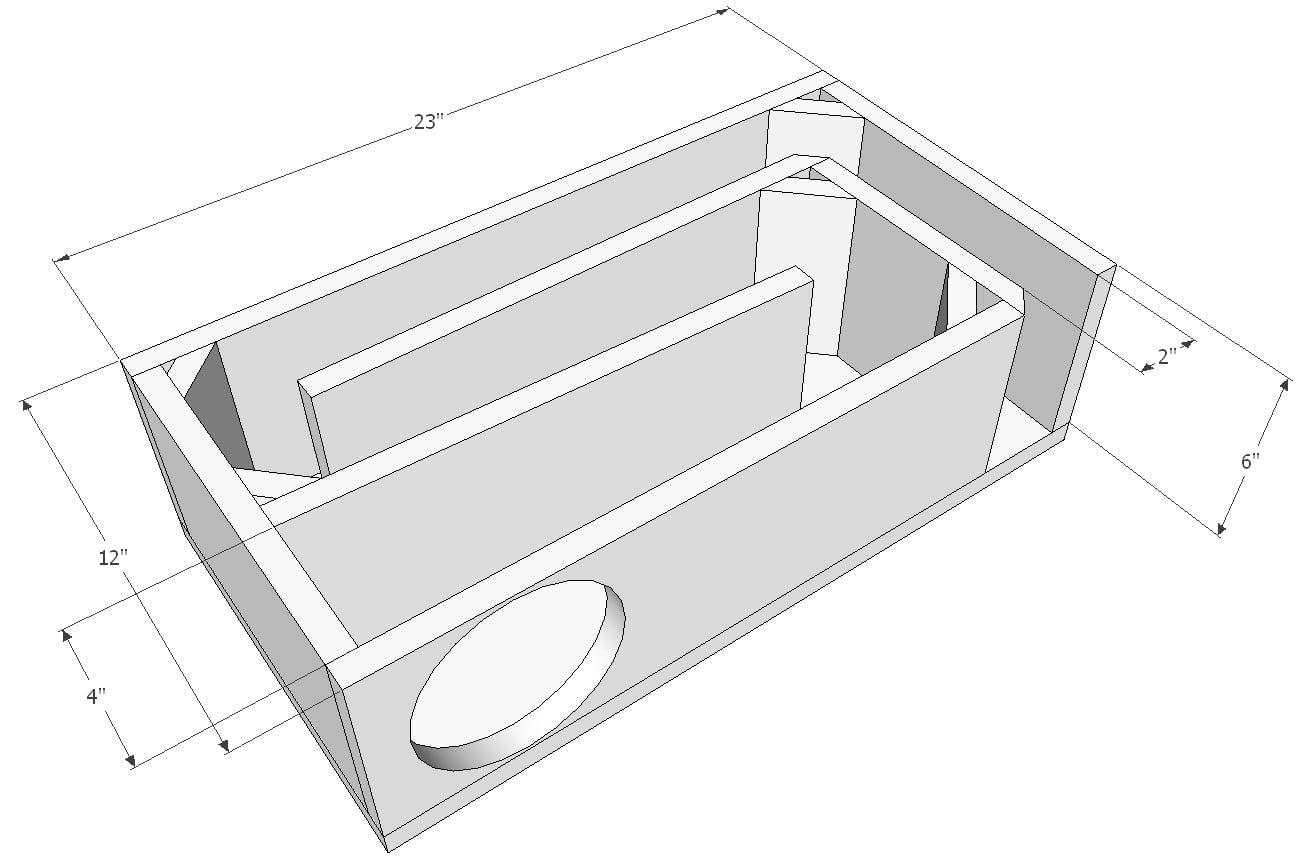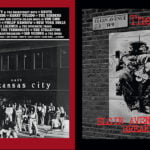It’s the time of year for saving money!
In the last several parts of this continuing series, I’ve written about why speakers need enclosures to make bass, instead of just for cosmetic appeal. In the course of that, I’ve written about enclosure types ranging from just a simple (huge) board to sealed boxes (both of the previous being, if the board or the box are big enough, called “infinite baffles”); to small sealed boxes (“air” or “acoustic” suspension systems); to bass-reflex systems of various kinds (simple, “tuned-port” and “distributed port”) and “resistive port” systems that act more like leaky sealed boxes than bass-reflex systems.
 In the course of that, I’ve mentioned – and even promised to write about – “transmission line” (“TL”) enclosures a number of times, but never yet actually done so. One of the reasons for that was simply that there was so much other information that had to be delivered to put the transmission-line enclosure in perspective and to make it comprehensible both in terms of how it works and as relative to other speaker enclosure designs. The other reason was, as I told you last time, that there are at least two different kinds of enclosures that — despite their design and functional differences – have been given that same name. Or, if you’d prefer, two different names “Transmission Line” and “Acoustic Labyrinth” have been given to similar but differently-functioning enclosures.
In the course of that, I’ve mentioned – and even promised to write about – “transmission line” (“TL”) enclosures a number of times, but never yet actually done so. One of the reasons for that was simply that there was so much other information that had to be delivered to put the transmission-line enclosure in perspective and to make it comprehensible both in terms of how it works and as relative to other speaker enclosure designs. The other reason was, as I told you last time, that there are at least two different kinds of enclosures that — despite their design and functional differences – have been given that same name. Or, if you’d prefer, two different names “Transmission Line” and “Acoustic Labyrinth” have been given to similar but differently-functioning enclosures.
As to how TL enclosures work, that’s really quite unusual and explains why I had to tell you about bass reflex and resistive port enclosures first – because one of the two types is reminiscent of the operation of a bass-reflex enclosure and the other is more similar to a sealed box enclosure with a resistive port.
Let’s take a look at the one more like a bass-reflex enclosure first. In that form of “transmission-line” a long “maze-like” path (usually called a “duct”) is structured within the enclosure for the back wave from the driver to follow and is always vented to the open air. This duct is similar in internal complexity to a folded horn (we’ll talk about horn enclosures in another installment) but, unlike a horn, there is no direct need for it to “flare” (grow greater in cross-section as it grows longer) and, although some designs may, in fact, be flared, the duct may also remain constant in cross-section or even, as the designer specifies, grow progressively smaller over its length. Unlike a horn, the flare is not the critical factor but instead, it’s the length of the created air column that is most important.
 That’s because, although this first type of TL enclosure uses, as does the bass-reflex type, back-wave energy from the driver to augment the bass energy coming off the driver’s front, the source of added energy is completely different: In a bass-reflex enclosure, the driver’s back wave energy is used to stimulate resonance in the enclosure itself; in its port; or in both; and it is (as with amplifiers not actually amplifying the input signal, but only using it to “gate” and reverse the phase of greater energy coming from the power supply) that stimulated resonance and not the actual back wave from the driver that appears out-of-phase at the enclosure’s port to boost the speaker’s bass output. In this type of transmission-line, although the purpose of the duct is still, as with a bass-reflex enclosure, to “flip” the polarity of the energy appearing at the end of the duct (the “vent”) so that it will add to the front wave off the driver, the sound that comes out of the vent is actually the driver’s original back wave and not some resonant construct.
That’s because, although this first type of TL enclosure uses, as does the bass-reflex type, back-wave energy from the driver to augment the bass energy coming off the driver’s front, the source of added energy is completely different: In a bass-reflex enclosure, the driver’s back wave energy is used to stimulate resonance in the enclosure itself; in its port; or in both; and it is (as with amplifiers not actually amplifying the input signal, but only using it to “gate” and reverse the phase of greater energy coming from the power supply) that stimulated resonance and not the actual back wave from the driver that appears out-of-phase at the enclosure’s port to boost the speaker’s bass output. In this type of transmission-line, although the purpose of the duct is still, as with a bass-reflex enclosure, to “flip” the polarity of the energy appearing at the end of the duct (the “vent”) so that it will add to the front wave off the driver, the sound that comes out of the vent is actually the driver’s original back wave and not some resonant construct.
Where the length of the duct comes in is that, although TL enclosure design has historically been “iffy”, and nowhere near as easily predictable or formulable as some other kinds of enclosure, one quarter of the wavelength of the fundamental resonance of the driver has been a pretty common choice and can provide the same kind of enhancement that port and box resonances do in bass-reflex designs. The difference is that it is not a resonant effect, but, by matching duct length to frequency, it allows for optimum driver loading, minimum enclosure resonance, and minimum acoustic impedance at the vent, for reduced back wave reflection back to the diaphragm and improved coupling to the air outside the enclosure. To give you some idea of what that length might be, if the driver’s woofer cone diameter is nominally 12 inches and its resonance is 33 Hz (fairly typical for a 12″ unit) and the speed of sound is 1125 feet per second, the necessary length of the duct by this standard can easily be calculated as (about) 8 ½ feet (1125’÷33Hz ÷4 = 8.523′).
 Although the critical thing about the duct is its length, other aspects of it do matter. For example, it’s almost always stuffed (to a greater or lesser degree, depending on the specific type of TL, the materials chosen, and how they’re applied) with one or more kinds of damping materials (Dacron, long-fiber wool, etc. are common choices). The purpose of this is to absorb all but bass frequencies and to reduce or eliminate both unwanted cabinet resonances and unwanted upper frequencies that might interfere with the other (non-bass) aspects of the sound that gets to the listener’s ear.
Although the critical thing about the duct is its length, other aspects of it do matter. For example, it’s almost always stuffed (to a greater or lesser degree, depending on the specific type of TL, the materials chosen, and how they’re applied) with one or more kinds of damping materials (Dacron, long-fiber wool, etc. are common choices). The purpose of this is to absorb all but bass frequencies and to reduce or eliminate both unwanted cabinet resonances and unwanted upper frequencies that might interfere with the other (non-bass) aspects of the sound that gets to the listener’s ear.
The other type of transmission -line enclosure also uses a long duct for the back wave and that duct is also stuffed with damping material. Where it differs is that the duct may or may not be vented to the open air because its intent is not to pass, but to, as completely as possible, absorb the back wave from the driver.
As one source puts it, “The enclosure behaves like an infinite baffle, potentially absorbing most or all of the speaker unit’s rear energies. A theoretically perfect TL would absorb all frequencies entering the line from the rear of the drive unit but remains theoretical, as it would have to be infinitely long.” That’s where the “leaky box” comparison with the resistive port enclosure comes in: With an open-vent transmission-line, even though almost all of the back wave is absorbed, the enclosure can be designed so that the remaining energy is all in the lowest frequencies – the ones the duct is not long enough to absorb – and can, with an open vent, be used, as with the other type of TL, to augment the front wave sound.
 One famous subwoofer, the Shahinian “Contrabombarde“, designed by Stewart Hegeman (the same man who invented the omnidirectional speaker and designed Harman-Kardon’s original “Citation” series electronics) used just two 8″ woofers in a double open-ended transmission-line setup (two side-by-side transmission lines in the same box with output only through the vents), that was claimed to be “flat” to 17Hz and (as told to me by Skip Weshner, who was my friend and a tight buddy of Hegeman) to have usable, and possibly even “world-destroying” bass down to 8Hz.
One famous subwoofer, the Shahinian “Contrabombarde“, designed by Stewart Hegeman (the same man who invented the omnidirectional speaker and designed Harman-Kardon’s original “Citation” series electronics) used just two 8″ woofers in a double open-ended transmission-line setup (two side-by-side transmission lines in the same box with output only through the vents), that was claimed to be “flat” to 17Hz and (as told to me by Skip Weshner, who was my friend and a tight buddy of Hegeman) to have usable, and possibly even “world-destroying” bass down to 8Hz.
As I remember it, the Contrabombarde used two different lengths (and thus two different tunings) for its transmission lines, which allowed it to TL load both the front and back waves off its drivers so that the sound from both came out in-phase and hugely powerful at the vents. A similar “load-both-sides-of -the-driver” approach has been taken by no less than Bose, and is mightily impressive. I’ll tell you about it and other things next time.
See you then!








